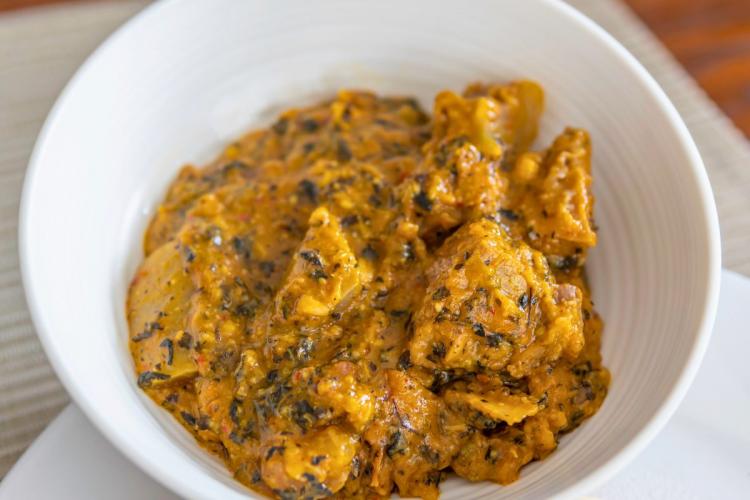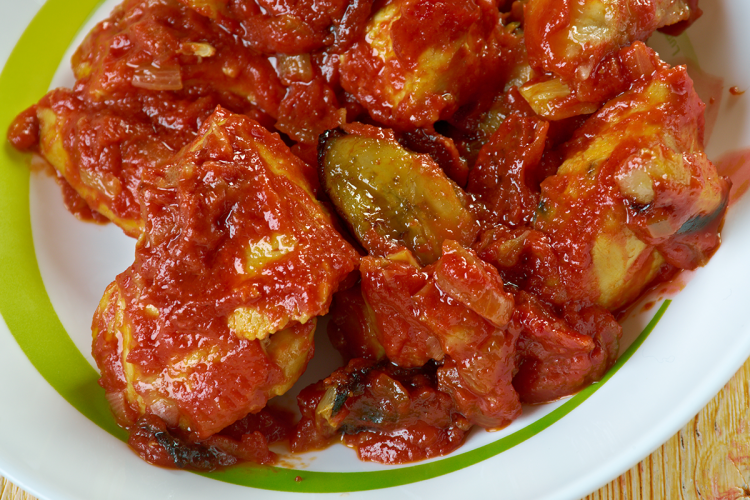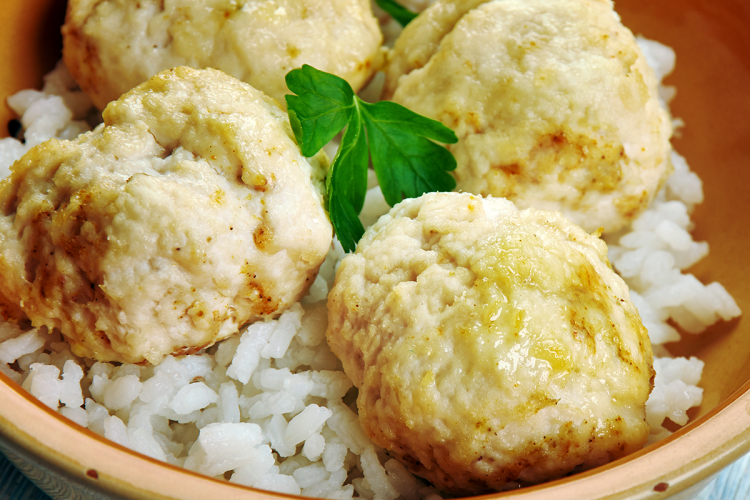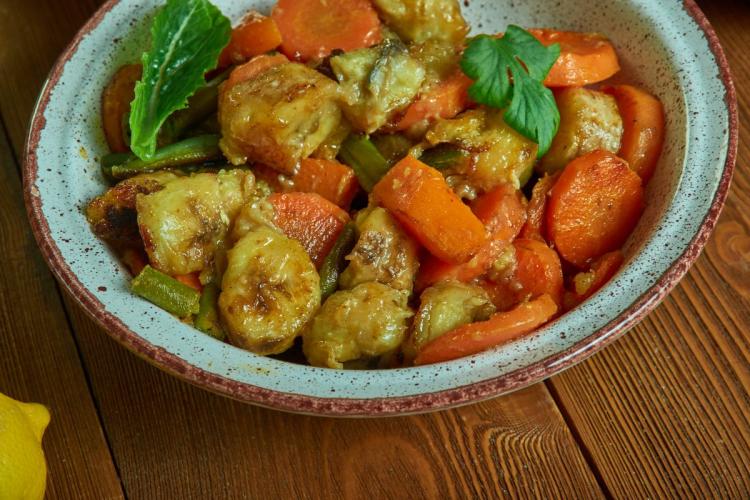Embark on a culinary journey through Central Africa
Savor the spice.
Discover the rich and diverse flavors of Central African cuisine, a testament to the region's vast cultural heritage and natural bounty. From the heart of the Congo Basin to the highlands of Rwanda, Central African food is a celebration of tradition, community, and the lush landscapes that provide an abundance of ingredients. Join us as we explore the staple foods, signature dishes, and cooking techniques that define this region's culinary identity.
Central African food
Central African cuisine is characterized by its hearty stews, savory grilled meats, and the generous use of tropical fruits and vegetables. Cassava, plantains, and maize form the backbone of many dishes, providing sustenance and comfort.
Signature dishes such as Moambe chicken, Ndolé, and Ugali reflect the region's rich culinary diversity, each offering a unique taste experience that is deeply rooted in local traditions and flavors.
The use of spices and herbs in Central African cooking is subtle yet impactful, enhancing the natural flavors of the ingredients and contributing to the dishes' overall health benefits. Slow cooking methods and communal dining are integral to the culinary culture, emphasizing the importance of food in bringing people together.
Exploring the staples of Central African cuisine
Venture into the bustling markets and serene villages of Central Africa, where the air is filled with the aroma of simmering pots and the sound of pestles rhythmically pounding. The staples of Central African cuisine are a reflection of the region's agricultural richness and culinary ingenuity.
Cassava and plantains: These starchy staples are versatile and omnipresent, serving as the base for both savory and sweet dishes. From the comforting Foufou to the crispy Makemba, cassava and plantains are central to the Central African diet.
Peanuts and palm oil: Widely used in cooking, these ingredients add depth and richness to dishes. Moambe chicken, a celebrated dish, showcases the harmonious blend of palm oil and peanut paste in creating a sauce that is both flavorful and nourishing.
The heart of Central African cooking are meat and fish
Meat and fish play a pivotal role in Central African cuisine, with each region boasting its own specialty. From the smoked fish of the Great Lakes to the bushmeat of the forested regions, these protein sources are expertly prepared to create dishes that are both hearty and flavorful.
The tradition of grilling and smoking meat and fish is prevalent, imparting a distinctive smoky flavor that is cherished across Central Africa.
Central to the culinary tradition are the rich stews and soups, often made with a base of tomatoes, onions, and local spices, simmered to perfection to create a comforting meal.
Vegetables and fruits are the colorful canvas of central African cuisin
The lush landscapes of Central Africa provide an abundance of vegetables and fruits, which are ingeniously incorporated into the daily diet. These ingredients not only add vibrant colors and textures to dishes but also are a source of essential vitamins and minerals.
There are plenty of leafy greens and tropical fruits. From the nutrient-rich Amaranth leaves to the sweet and tangy Mangoes, the use of fresh produce is integral to creating dishes that are both healthy and delicious.
A taste of Central Africa and signature dishes to savor
Delve deeper into the essence of Central African cuisine with these must-try dishes, each telling a story of its own, from the communal Liboké to the celebratory Nyama Choma. These dishes are a testament to the region's culinary diversity and cultural richness.
Muamba de galinha, also known as moambe chicken or chicken muamba is a beloved spicyn dish made with chicken, palm nut paste, often okra, palm oil, garlic and a variety of spices, offering a rich and hearty taste that is quintessentially Central African. Although it's more associated with Angola, this dish is beloved across the Central African region. The dish showcases the influence of Portuguese cuisine.
Ndolé is a flavorful stew from Cameroon, combining bitter leaves, peanuts, and either fish or meat, showcasing the region's love for combining diverse flavors.
Poulet DG (Director General's chicken) is a luxurious Cameroonian dish featuring chicken, plantains, and a variety of vegetables, symbolizing opulence and often served at special occasions.
Saka saka, a cassava leaves stew also known as pondu, is a popular dish across Central Africa, especially in Congo. It's made from cassava leaves, palm oil, and often includes fish or meat, cooked into a hearty stew.
Fumbwa is a traditional Congolese dish made with wild spinach, smoked fish, and palm oil, showcasing the use of indigenous greens.
Kwanga is a staple food in the Democratic Republic of the Congo, Kwanga is made from cassava flour and is fermented before being cooked and wrapped in banana leaves, resulting in a dense, dough-like food that's often paired with fish or meat dishes.
Liboké de poisson is more a method of cooking fish (or sometimes meat) where it's seasoned with spices and wrapped in leaves before being steamed or grilled, offering a unique, smoky flavor.
Maboké is similar to liboké as it is a moree method of cooking fish than a dish. Maboké is a Central African dish where fish is marinated in spices, wrapped in banana leaves, and then cooked over an open flame or coals, typical in the Central African Republic and Congo.
Bitterleaf soup is widely consumed in Cameroon, this soup is made from the leaves of the bitterleaf plant, often combined with meat, fish, palm oil, and sometimes ground peanuts, creating a distinctive, slightly bitter flavor.
Chikwangue is a side dish made from cassava paste that's been wrapped in leaves and steamed, resulting in a dense, chewy texture. It's a common accompaniment to meat and fish dishes in the Congo region.
Kanda are meatballs made from ground meat (often game or beef) mixed with spices and sometimes cassava flour, then cooked in a flavorful tomato-based sauce, popular in several Central African countries.
The spirit of Central African cuisine
Central African cuisine is more than just food; it's a vibrant expression of culture, community, and the natural abundance of the region. Through its staple ingredients, traditional dishes, and communal dining practices, Central African food invites us to explore a rich tapestry of flavors that nourish both the body and soul. Join us on this culinary journey as we celebrate the diverse and delicious cuisine of Central Africa.




